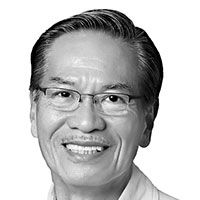Inferno's Manila(Part 6)
“Suffocating pollution.†The third of the four exaggerations that Dan Brown used in describing Manila as the “gates of hell†in his latest book “Inferno.†The other three are “the most densely populated city on earth,†“six-hour traffic jams,†and “a horrifying sex trade.†As we have concluded in the first two, the descriptions are highly exaggerated. In this case, we haven't heard yet of anybody suffocated by Manila's pollution, or at least, nothing's reported yet. Doctors may tag pollution as a killer, but not through the process of suffocation.
Again, the funny thing is, it is true. Manila is certainly polluted, to a certain extent. So are majority of the megacities in Asia. Maybe Singapore and Japanese cities like Kitakyushu are not, but it is an accepted fact that cities all around the world suffer from varying degrees of air pollution. Maybe not suffocating, but researches indicate that air pollution contributes to respiratory diseases leading to early death. Anybody who lives in a big city can attest to this.
Air pollution is caused mainly by combustion (we commonly call “burningâ€). There are two major sources of air pollution in an urban area. The first is industrial activity, especially in factories involving manufacturing processes requiring combustion of materials. Where you see smokestacks, you see an industrial area, and for sure the air will be filled with emissions from these economic activities. We can't eliminate these activities, really, for these produce the GDP which we need (as discussed in previous articles). We can try to control the smoke.
The other main pollution source is emissions from transport vehicles. Of course, except for very few “electric†units, almost all transport vehicles are powered by internal combustion engines, using gasoline or diesel. New vehicles produced today are “relatively†“cleaner,†but emits pollutants just the same. But older degraded engines bellows such unsightly black smoke that we commonly call these vehicles as “smoke belchers.†But what really is very surprising and less known to people is the fact that transportation produces more pollution than industrial activity in a big city. And yet, it is a concern we seldom address!
Just take a look at the Airshed Governing Board of Metro Cebu. How many local government executives (LCEs) actually attend these boards? I've seen only a few, and these airshed board meetings are actually just twice a year, maybe quarterly. There are representatives of course, but oftentimes, they can't bring with them policy wisdom and the decision-making expected of the LCEs. The funnier thing is, the Metro Cebu Airshed Governing Board was actually awarded as the first of its kind to be convened (under the law) and the one with a certain degree of operationalization. You can just imagine how the others are, if they even exist at all. I am not sure about Metro Manila. No wonder Brown called it “suffocating.â€
Even with the “environmental†nature of air pollution, we can't severe it from the urban mechanism, more specifically of the transport sector. It is related to “six-hour traffic,†as well as to being “densely populated.†Six hours of traffic jams produces six times more pollutants than an hour of congestion. The amount of pollution a person produces in travelling 50 minutes to work is twice the emission produced by a 25-minute trip. All because of the car engine which was actually non-existent before the 20th century. The world's worst invention.
That's why there are strong advocacies now for non-motorized transport (walking, bicycling, etc.), which prompted Cebu City to request for a bicycle-lane study. Marikina is very well ahead and is considered a model for the entire country. Puerto Princesa and Tagbilaran cities have their own advocacies, too, mostly in the “tricycle engines†sector. These we must support, but not that kind that alienates other sectors. The bottom line in clean air initiative for the transport sector is establishing more efficient public transport systems, coupled with non-motorized transport, as an integral part of the former, or as a viable alternative, if possible.
Many often say, “nothing in this world is free.†That is true, but another saying is also true: “we often disregard the value of a thing, until that is taken away from us.†We think air is always free. It is! But clean air is not! When it becomes dirty, we run to our closeted air-conditioned homes and offices, or the malls, and leave the public air above the city dirtier with all the smoke and dust from six-hour traffic jams. One of these days, it will truly become “suffocating!†(To be continued…)
- Latest
- Trending
























